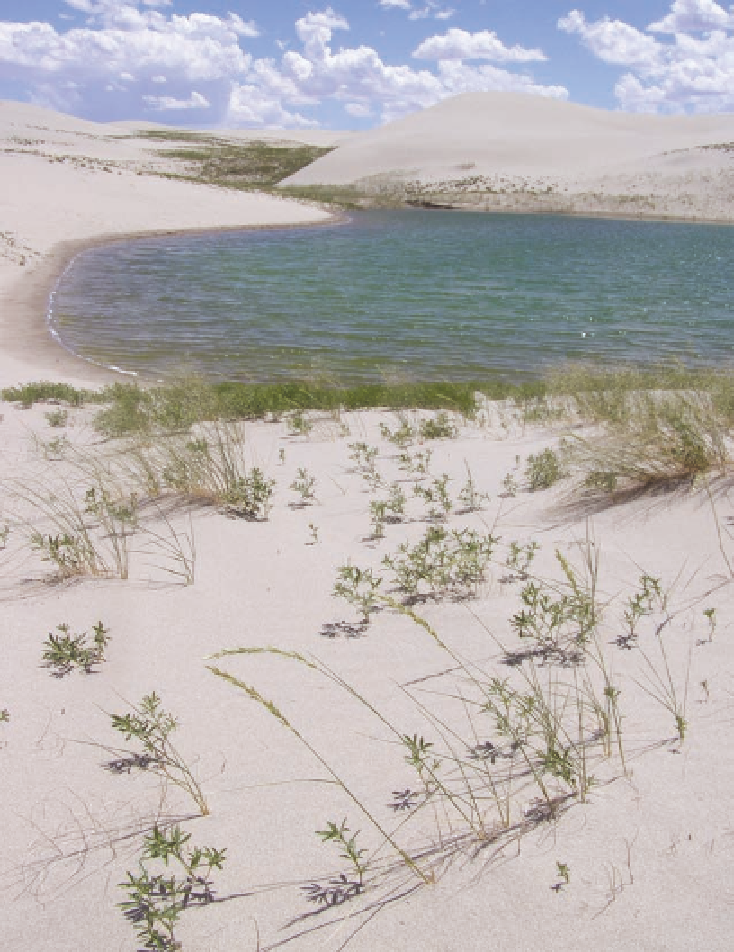Geoscience Reference
In-Depth Information
Fig. 9.5. Small ponds sometimes form
between dunes, primarily because of
snowdrifts that melt slowly after being
buried by drifting sand. the coloniz-
ing plants in this photo, taken in the
Killpecker Dunes, are alkali wildrye and
slimflower scurfpea. Photo by Bonnie
Heidel.
the plant tissues grow and die, soil organic matter gradu-
ally accumulates. Some of it decomposes, providing
nutrients that, combined with water availability, create
one of the best environments for plant growth in the
intermountain basins. that may be short-lived, however,
as the next blowout—whether caused by an extended
drought, fire, or other disturbance—may bring the
organic matter to the surface, where it is widely dispersed
by the wind. Alternatively, the blowing sand may cover
well-developed soils. Known as paleosols, such buried
soils are useful for interpreting climate history.
A newly activated dune generally has a deficiency
of nutrients on the surface. Without drought or dis-
turbance, however, the dunes eventually become sta-
bilized and highly productive—a classic example of
natural succession. the dunes of central nebraska have
been one of the most productive grasslands on the
Great Plains, providing forage even during extended
droughts, such as occurred in the 1930s.
Most sand dunes in Wyoming occur at higher eleva-
tions than in adjacent states, and consequently they
have a relatively cold climate and short growing sea-
son. With current predictions for increased warming
and drought, reactivation of dunes over large areas
seems likely and may have already begun. numerous
studies have shown that drought causes a rapid decline

Search WWH ::

Custom Search